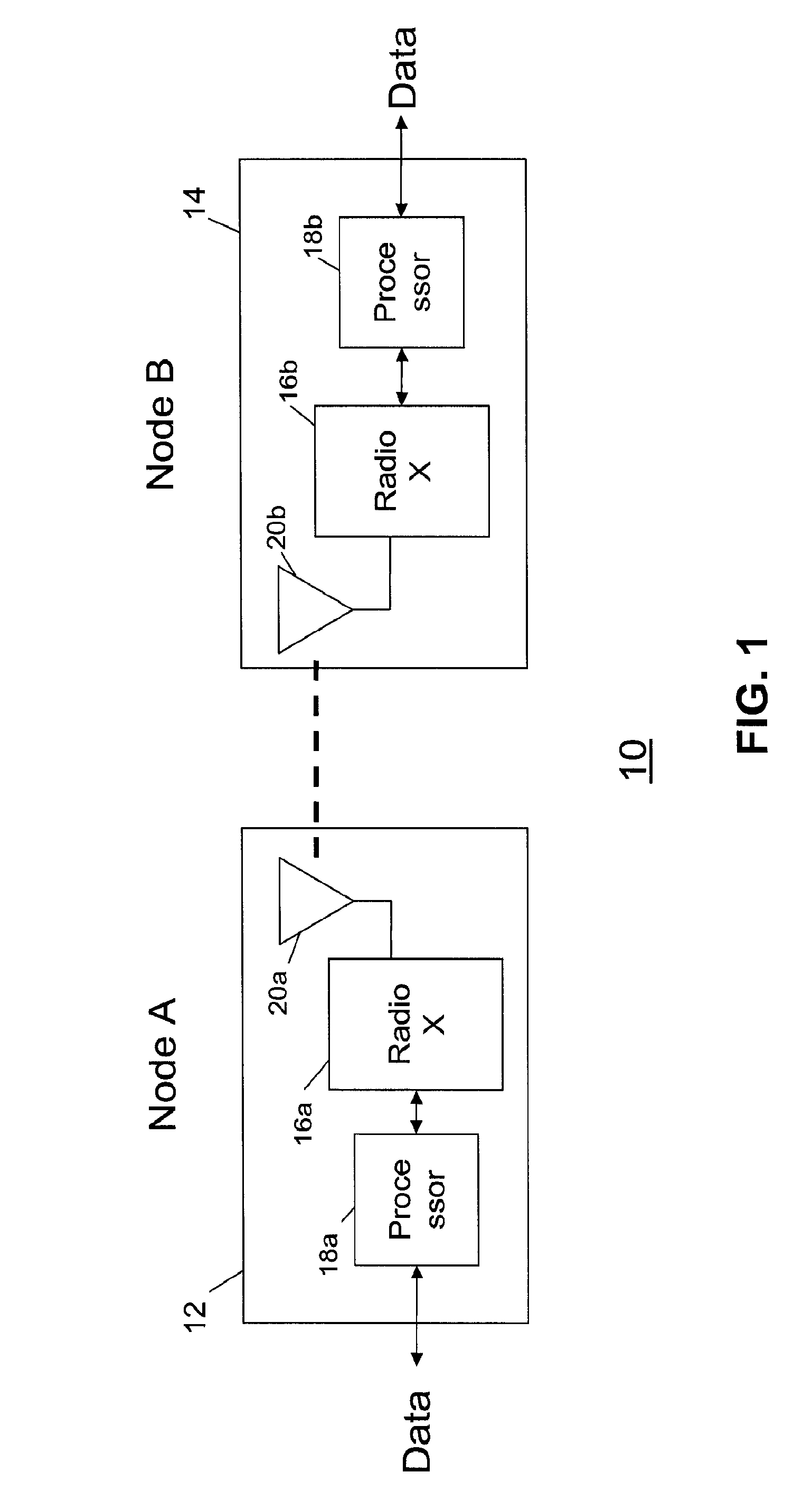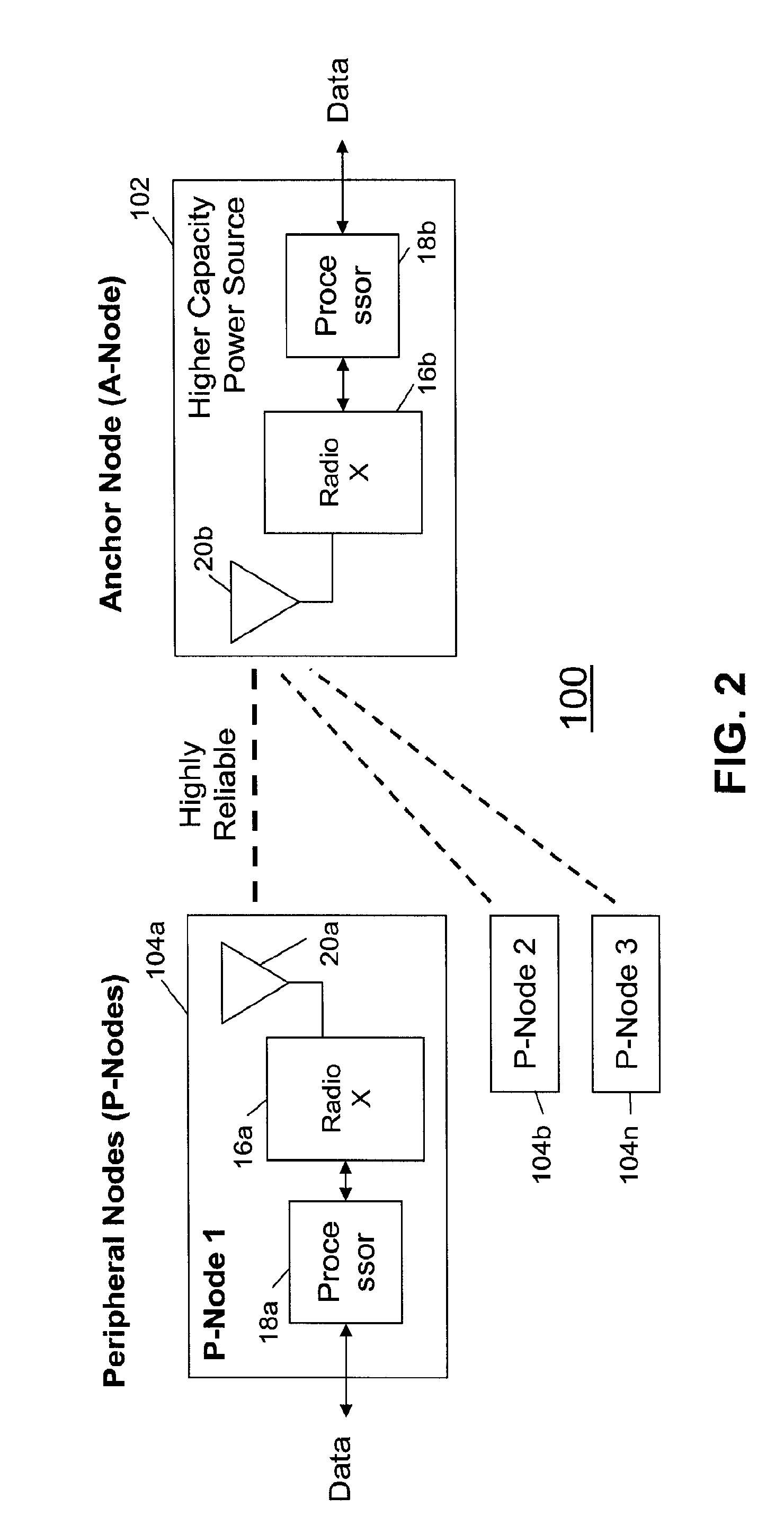Wireless communications systems using multiple radios
a communication system and radio technology, applied in the field of wireless communication systems, can solve the problems of challenging system design, affecting other factors, and limited degree of freedom for desired optimization
- Summary
- Abstract
- Description
- Claims
- Application Information
AI Technical Summary
Problems solved by technology
Method used
Image
Examples
Embodiment Construction
A wireless communications system 10 comprises at least two nodes 12 and 14 communicating with each other as shown in FIG. 1. The two nodes 12 and 14 communicate through a radio system, 16a and 16b, respectively, via antennas 20a and 20b. The radios on both sides (16a and 16b) are of the same type, called Radio X. As shown, the data can be optionally preprocessed by processor 18a, making it suitable for radio transmission, before it is fed to radio system 16. On the receiving end, the data can be post processed by the processor 18b to recover the originally sent data. Based on the requirements of a given system, the radio system 16 can be optimized in certain ways. Following are some examples of the factors that can be optimized:Low power dissipation of nodes;Low cost of nodes;High link reliability (immunity to fading, interference and noise);Small physical foot print of the nodes;High data rates;Large communication range; orCause minimum interference to other radio systems (e.g., qu...
PUM
 Login to View More
Login to View More Abstract
Description
Claims
Application Information
 Login to View More
Login to View More - Generate Ideas
- Intellectual Property
- Life Sciences
- Materials
- Tech Scout
- Unparalleled Data Quality
- Higher Quality Content
- 60% Fewer Hallucinations
Browse by: Latest US Patents, China's latest patents, Technical Efficacy Thesaurus, Application Domain, Technology Topic, Popular Technical Reports.
© 2025 PatSnap. All rights reserved.Legal|Privacy policy|Modern Slavery Act Transparency Statement|Sitemap|About US| Contact US: help@patsnap.com



